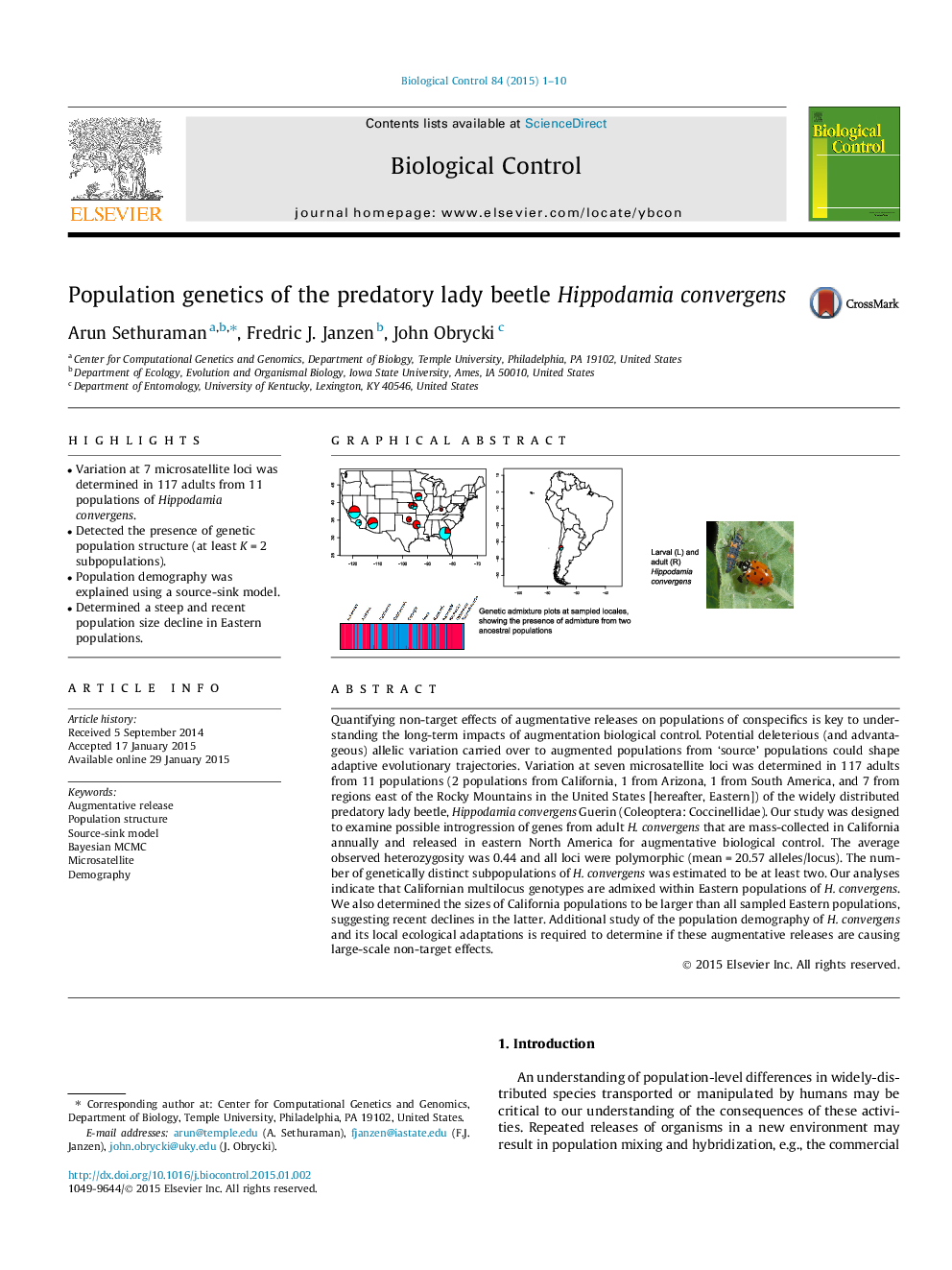| کد مقاله | کد نشریه | سال انتشار | مقاله انگلیسی | نسخه تمام متن |
|---|---|---|---|---|
| 4503790 | 1624250 | 2015 | 10 صفحه PDF | دانلود رایگان |

• Variation at 7 microsatellite loci was determined in 117 adults from 11 populations of Hippodamia convergens.
• Detected the presence of genetic population structure (at least K = 2 subpopulations).
• Population demography was explained using a source-sink model.
• Determined a steep and recent population size decline in Eastern populations.
Quantifying non-target effects of augmentative releases on populations of conspecifics is key to understanding the long-term impacts of augmentation biological control. Potential deleterious (and advantageous) allelic variation carried over to augmented populations from ‘source’ populations could shape adaptive evolutionary trajectories. Variation at seven microsatellite loci was determined in 117 adults from 11 populations (2 populations from California, 1 from Arizona, 1 from South America, and 7 from regions east of the Rocky Mountains in the United States [hereafter, Eastern]) of the widely distributed predatory lady beetle, Hippodamia convergens Guerin (Coleoptera: Coccinellidae). Our study was designed to examine possible introgression of genes from adult H. convergens that are mass-collected in California annually and released in eastern North America for augmentative biological control. The average observed heterozygosity was 0.44 and all loci were polymorphic (mean = 20.57 alleles/locus). The number of genetically distinct subpopulations of H. convergens was estimated to be at least two. Our analyses indicate that Californian multilocus genotypes are admixed within Eastern populations of H. convergens. We also determined the sizes of California populations to be larger than all sampled Eastern populations, suggesting recent declines in the latter. Additional study of the population demography of H. convergens and its local ecological adaptations is required to determine if these augmentative releases are causing large-scale non-target effects.
Figure optionsDownload as PowerPoint slide
Journal: Biological Control - Volume 84, May 2015, Pages 1–10